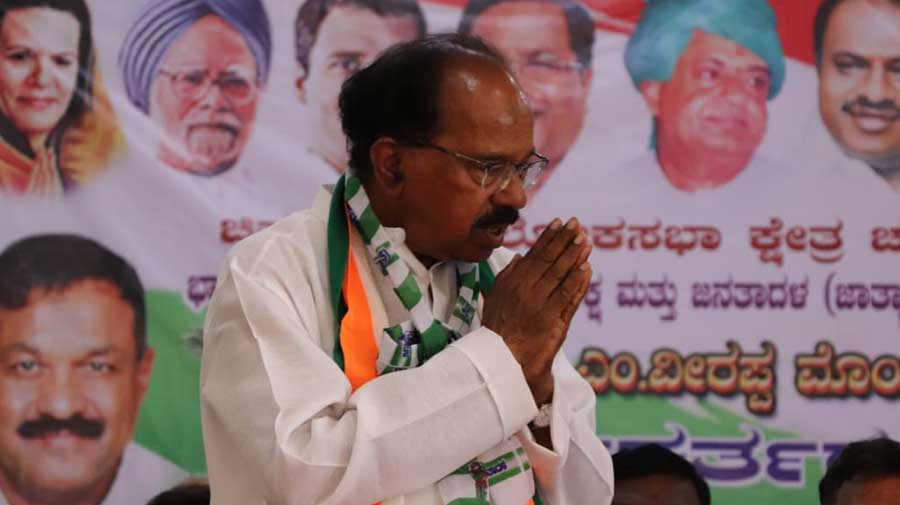The Narendra Modi government’s plans to store its crude oil in US strategic petroleum reserves has come under strong criticism from former oil minister and Congress leader M. Veerappa Moily, who has slammed the government for failing to create new storage capacity in the country.
Oil sector analysts also feel a storage in the US would not help the country in times of emergency as the shipment would take over three weeks and shipping lines could come under attack in the event of a war.
The Congress leader said 5.33 million tonnes of strategic oil storages were built by the Congress-led UPA-I and UPA-II at Visakhapatnam in Andhra Pradesh, Mangalore and Padur (both in Karnataka) to support almost 10 days of India’s oil needs during an emergency. Plans for another 12.5 million tonnes of strategic storage in four states was initiated by UPA-II in 2013 but these were put on the backburner by the BJP-led NDA government, he alleged.
Had these reserves being built in the past six years, India could have stored oil by buying it when international rates plunged to a two-decade low in April. Instead, the government is now looking to hire US strategic storages to augment India’s emergency stockpile, Moily said.
Oil ministry officials said India will have to pay a rental for hiring the storages in the US. This rental will be on top of the international price for oil.
The alternative is to build our own strategic reserves which will involve huge capital cost and will take a few years to construct. So the rental is a small fee to pay to get immediate access to a strategic petroleum reserves (SPR) which is built and maintained by private companies.
The oil stored in the US reserves can be used for the nation's own needs or can be traded to capture price advantage, he said adding these two scenarios work when oil prices rise after India has bought and stored oil in US reserves, they added.
However, analysts said such storages are built for emergency needs and used as a quick response to supply disruption. They wondered how it would meet the emergency needs when ships take about three weeks to reach India and in case of war shipping lines could come under attack.
Also, if the oil is stored to be sold when prices go up, then it is trading, which is contrary to the Modi government’s ethos of government should not be in the business of doing business.
The global crude prices are trading around $43 per barrel and forecasts of crude prices indicate that they are likely to remain stable due to slump in global demand following the coronavirus pandemic and gradual shift from fossil fuels. Industry estimates of price outlook by Shell suggest that it expects oil to cost $40 a barrel in 2021 and $50 in 2022 and as per BP’s forecast, oil will average $55 from 2021 until 2050. Of course, these numbers can go haywire if the geo-political situation takes an adverse turn.











